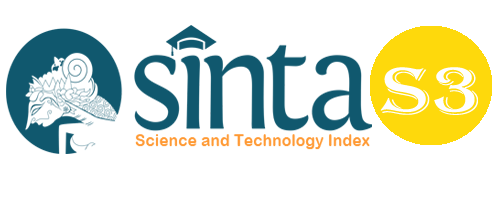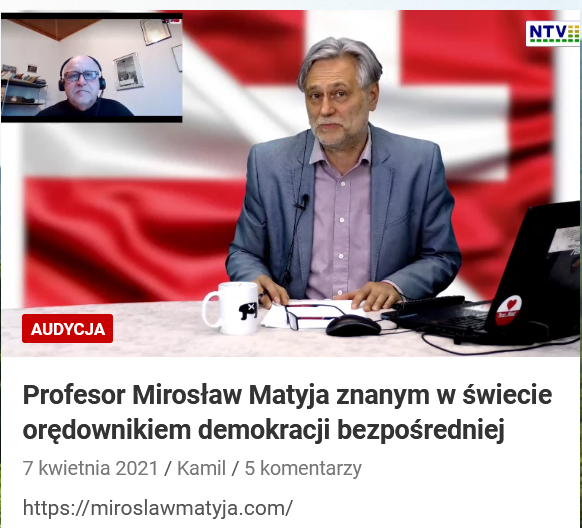Critical Thinking within the Context of the Revised Bloom’s Taxonomy in Written Language Tests
Abstract
Critical thinking is still infrequently taught in the classroom, particularly in Indonesia, despite the fact that many experts believe it is a vital problem in the education area. As a result, the purpose of this research was to picture the use of the revised Bloom taxonomy to investigate critical thinking in language tests. The article analyses the test items in language tests which consists of the High thinking order level based on the revised Bloom's theory. To begin, this current work summarizes past research, which found that critical thinking has been studied in a variety of areas in language teaching but has yet to address language evaluation using the revised Bloom's taxonomy. It is necessary to present the six-level Anderson and Krathwohl (2001) taxonomy, which is then referred to as the revised Bloom's taxonomy, before discussing how to promote critical thinking. Then, the finding indicates that the item tests which are considered to be high order skills consistently direct students to think critically and systematically.
Keywords
Full Text:
PDFReferences
Aghaei, K., Education, P., Rad, E. M., & Science, G. (2018). On the Interconnection between Bloom’s Critical Thinking Taxonomy & Listening Comprehension Performance of Iranian EFL Learners. 22–31
Akib, E., & Arief M (2019). Assessment of Teaching in 21st Century. Journal of Physics: Conference Series, 1 (1179).
Akib, E., & Arief M (2020). Critical thinking in cognitive domain: Exploring assessment of English teaching at pandemic period of covid-19, JEES (Journal of English Educators Society).
Anderson, Lorin W, and Krathwohl, D. R. (2001). TAXONOMY for learning, teaching and assessing (A Bridged; L. Anderson, D. Krathwohl, P. Airasian, K. Cruikshank,
Astuti, R.W., Waluyo, H.J., and Rohmadi, M. (2019). Character Education Values in Animation Movie of Nussa and Rarra. Budapest International Research and Critics Institute-Journal (BIRCI-Journal). P. 215-219.
Azhar,A. (2018). Students’ Trends in Islamic Communication Postgraduate in2010-2016 State Islamic University of North Sumatera (UINSU). Budapest International Research and Critics Institute (BIRCI-Journal), P.206-214.
Cohen, Louis & Lawrence Manion (2007). Research Methods in Education. New York: Routledge
Davies, Martin. (2015). A model of Critical Thinking in Higher Education. Springer
Ebadi, S. (2016). Exploring Bloom’s Revised Taxonomy of Educational Objectives in TPSOL Textbooks. Journal of Teaching Persian to Speakers of Other Languages, 5(1), 65–93.
Eber, P. A., & Parker, T. S. (1999). Assessing Student Learning : Applying Bloom ’ s Taxonomy Bloom ’ s Taxonomy. (1956), 45–54.
Ekahitanond, V. (2013). Promoting university students ’ critical thinking skills through peer feedback activity in an online discussion forum. 59(2), 247–265.
https://doi.org/10.5539/ass.v7n4p26
Kamlasi, Imanuel & Anselmus Sahan. (2018). Journal of English Language Literature and Teaching. Descriptive Analysis on English Test Items based on the Application of Revised Bloom’s Taxonomy, Vol 2, p 203-210
Köksal, D., & Ulum, Ö. G. (2018). JOURNAL OF LANGUAGE AND LINGUISTIC
Krathwohl, D. R. (2014). Revision An of Overview Bloom ’ s Taxonomy :41(4), 212–218.
Ledward, B. C., & Hirata, D. (2011). An Overview of 21st Century Skills. Summary of 21st Century Skills for Students and Teachers, by Pacific Policy Research Center, Honolulu: Kamehameha Schools-Research & Evaluation.
Leslie, C. (2016). Anderson and Krathwohl Bloom ’ s Taxonomy Revised.
Lindemann, D. J., & Tepper, S. J. (2012). Painting with Broader Strokes: Reassessing the Value of an Arts Degree--Based on the Results of the 2010 Strategic National Arts Alumni Project. Special Report 1. Strategic National Arts Alumni Project
Mbato, C. L. (2019). Indonesian EFL Learners ’ Critical Thinking in Reading : Bridging the Gap between Declarative , Procedural and Conditional Knowledge. HUmaniora, 31(1), 92–101.
Paul, R., & Elder, L. (2008). The Miniature Guide to Critical Thinking.
R. Mayer, P. Pintrich, … M. Wittrock, Eds.). David McKay Company Inc. Bloom, B. (1956). Taxonomy of Educational Goals. Canada: Longman LTD.
Saleh, A., Mujahiddin. (2020). Challenges and Opportunities for Community Empowerment Practices in Indonesia during the Covid-19 Pandemic through Strengthening the Role of Higher Education. Budapest International Research and Critics Institute-Journal (BIRCI-Journal). Volume 3, No 2, Page: 1105-1113
Setyowati, et all. (2020) The Implementation of “Test of Evaluating" and "Test of Creating" in the Assessment of Learning by EFL Lecturers in Pandemic Era. IDEAS; Journal of Language Teaching and Learning, Linguistics and Literature.
Setyowati., & Susanto (2019). Promoting University Students’ Critical Thinking Skills Through Implementation of the Revised Bloom’s Taxonomy in Language Assessment: A Theoretical framework Perspective.181-184 (SoSHEC 2019)
Stanny, Claudia J. (2016), Reevaluating Bloom's Taxonomy: What Measurable Verbs Can and Cannot Say about Student Learning. 1-12 (MDPI Education Series)
STUDIES Language a ssessment through Bloom ’ s Taxonomy. Journal of Language and Linguistic Studies, 14(2), 76–88
Tayyeh, et all. (2021). An Analysis Of Reading Comprehension Questions In English Textbook " English For Iraq" According To Revised Bloom’s Taxonomy. Turkish Journal of Computer and Mathematics Education.
Thomas, T. (2017). Developing First Year Students ’ Critical Thinking Skills. 7(4).
Wilson, K. (2016). Critical reading , critical thinking : Delicate scaffolding in English for Academic Purposes ( EAP ). Thinking Skills and Creativity, 22, 256–265. https://doi.org/10.1016/j.tsc.2016.10.002
Zuhri, F., & Susanto. (2018). A Study on the Competence of English Subject at Junior Middle School Having Low and High Order Thinking Skills. 108 (SoSHEC 2017), 60–64.
DOI: https://doi.org/10.33258/birci.v5i2.5348
Article Metrics
Abstract view : 131 timesPDF - 35 times
Refbacks
- There are currently no refbacks.

This work is licensed under a Creative Commons Attribution-ShareAlike 4.0 International License.

This work is licensed under a Creative Commons Attribution-ShareAlike 4.0 International License.

_.gif)

















_.gif)



